DIY Drip-Water Plants Using Milk Jugs
Updated: Apr. 24, 2020
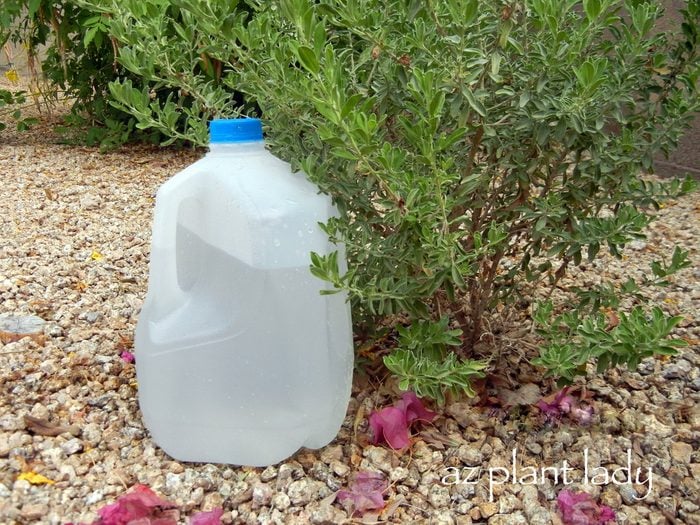
Many areas of the United States are suffering from extreme drought and your garden may also be showing signs of
Many areas of the United States are suffering from extreme drought and your garden may also be showing signs of it as well.
So, if you plants are in need of more supplemental water, what do you do? Do you haul out your hose to water your thirsty plants? Unfortunately, when you water your plants with a hose, a lot of the water from the hose often comes out too quickly for the soil to absorb and much of the water runs off and doesn’t water your plants deeply enough.
So, other then using a hose or sprinklers, what can you do for your thirsty plants?
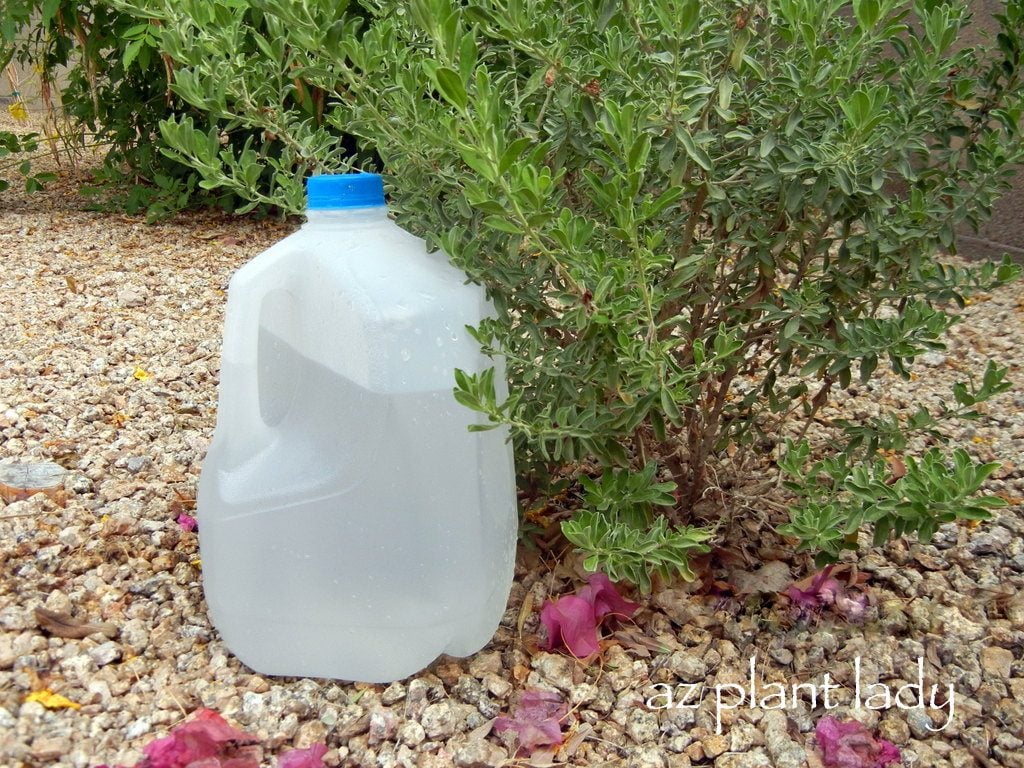
How about making your own drip-watering container? This is the perfect way to slow-water your plants and recycles your old milk jugs. It is also an easy way to apply liquid fertilizer to your plants too!
Making your own drip-watering container is super easy and the only things you need are a clean plastic milk jug and a sharp nail. That’s it!
What you need to do is to make tiny holes on the bottom of your milk container. Here is how you do it…
– Take a sharp nail and heat it up using a lighter or the burner on your stove (be careful not to burn your fingers when you do this part ;-).
– Make four holes equally spaced on the bottom of your milk jug. You may need to reheat the nail after each hole, which helps the nail to pierce the plastic easily.
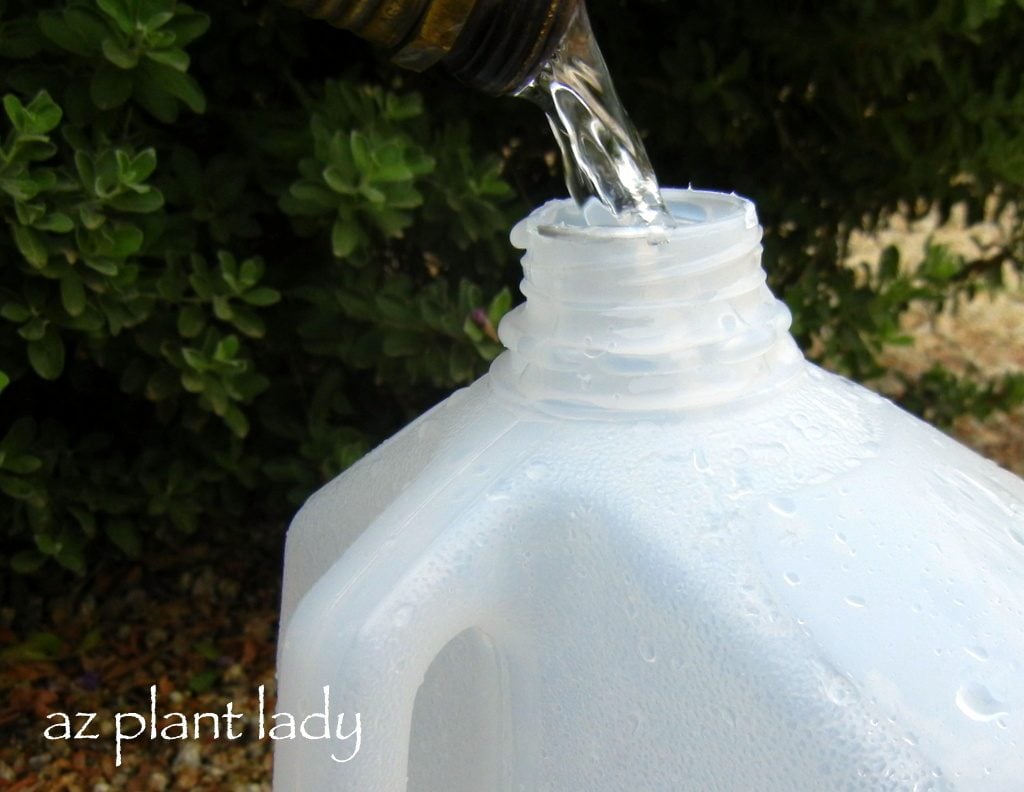
– Place your milk jug next to the plant you want to water in your garden and fill it with water from your hose. If the hose doesn’t reach your plant, simply fill it with water at the source, put the cap on and turn it upside down (so the water doesn’t come out the holes) until you reach your plant and then set it down.
– Water will slowly drip out into the soil around your plant, which allows the water to deeply penetrate the soil without runoff.
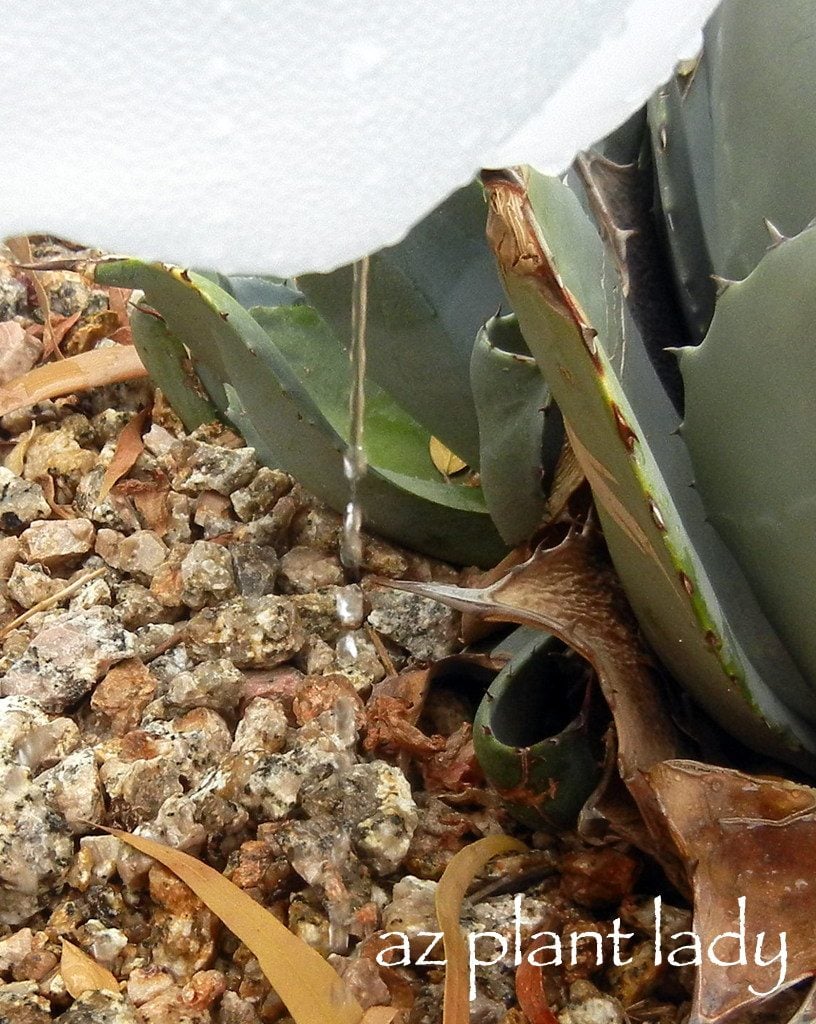
Your plants will appreciate the extra water and you’ll save time and water by not standing over your plants watering with your hose.
**In my garden, I like to deep water my succulents using this method too!
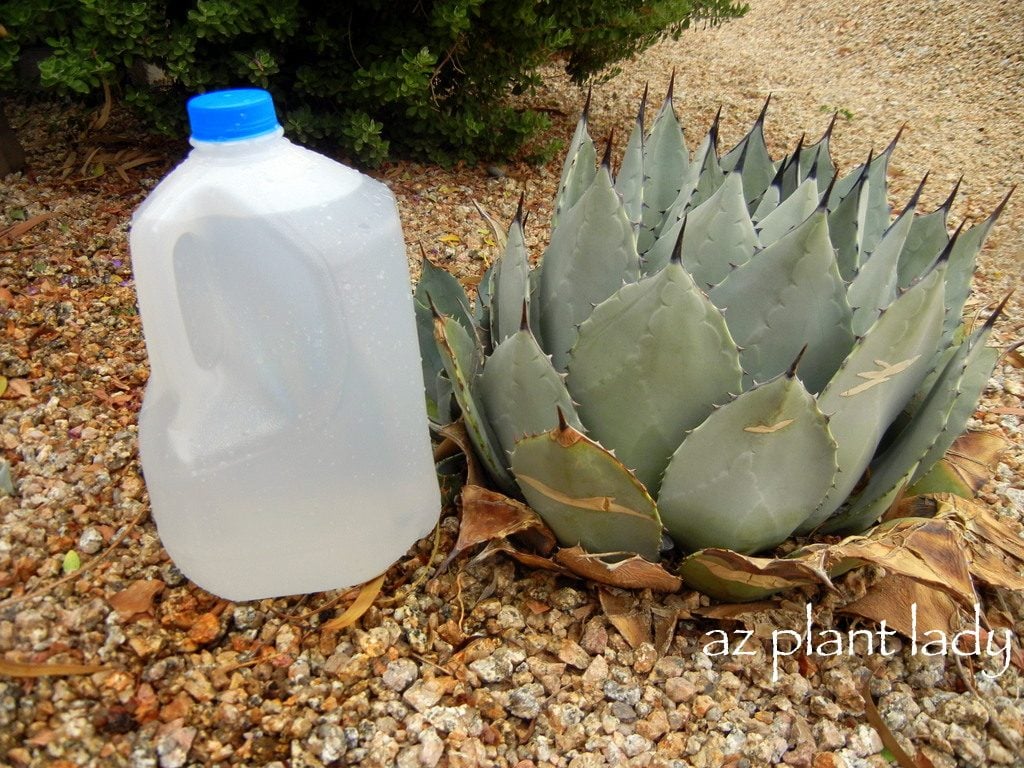
For a more permanent solution, you can make holes on the sides of a milk jug and bury it entirely next to your plant, just leaving the mouth of the jug exposed. Leave the cap on and unscrew it and fill with water when needed.
Milk jugs are incredibly versatile and have many uses. Check out this Birds & Blooms article for more ideas: “Uses for Milk Jugs”